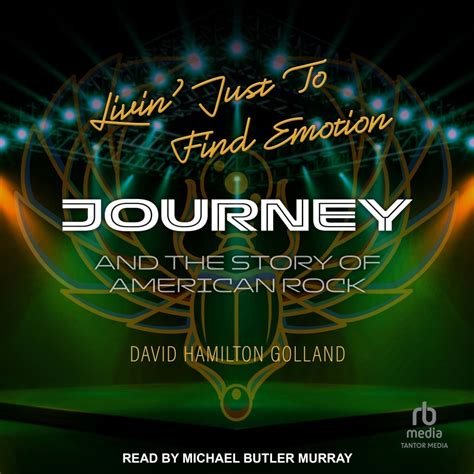Journey’s Fascinating Journey
Journey, one of the most popular rock bands of all time, has been making music – and fans and money – for more than fifty years. Their songs have been heard by hundreds of millions of people and sung in karaoke bars by nearly as many. Who they are, and were, and how it happened is the subject of David Golland’s fascinating band biography Livin’ Just to Find Emotion: Journey and the Story of American Rock. Golland is a fan of the group, but this is no expanded fanzine. The book is a critical look at the history of a creative enterprise that has played an outsize role in popular entertainment.
Golland is an historian with several books under his belt. He knows research, theory and the importance of a critical lens, such as race, through which to make compelling historical arguments. In Livin’ Just to Find Emotion, he balances rigorous scholarship with genuine enthusiasm and appreciation for the music. He relies heavily on primary sources and has talked with scores of people in and around the band. Journey has a long and complicated history. Golland’s approach, as it turns out, is truly the best way to chronicle this complicated group.
Journey’s origins stretch back to the early 1970s in San Francisco. Talented musicians with connections to popular artists such as Santana and the Steve Miller Band were the initial members. Golland is good with the fluidity of the scene, explaining how musicians joined, left, rejoined and formed new bands, looking for synergy and success. Journey’s creation was mostly due to the vision of Herbie Herbert, a well-known manager who stayed with the band through the 1990s. Herbert was a savvy businessman, entrepreneur, image-maker and hustler.
Known for their take on progressive rock, Journey was not especially successful in their early years. Their record company pushed for changes. Different musicians auditioned and/or were slotted into particular roles. By the late 1970s, a new lead singer, Steve Perry, joined and took Journey to a new level. Another personnel change a few years later brought keyboardist and songwriter, Jonathan Cain. He meshed with the group’s strengths and wrote several of Journey’s most popular rock ballads. The result was several years of extraordinarily popular songs and albums. Journey’s success was, literally, off the charts. More personnel changes took place in the latter part of the 1980s, followed by a several year break, and then a reunion. The band has remained active and popular since the early 2000s, with ongoing personnel changes and several lawsuits. For many of those years, Journey toured relentlessly, building and pleasing a multi-generational fan base.
Gollands skillfully charts these changes, giving just enough detail to help us appreciate the pressures, expectations, personalities and aspirations of the musicians and surrounding teams. Happily, he does not get pulled into trivia or unnecessary details. Golland is particularly good on explaining the unusual business organizational structure that bound band members together. They established a partnership, with equal representation, and then reformulated the partnership as membership changed. Golland walks us through the consequences. He is equally informative when it comes to appreciated the grueling schedule Journey adopted. They worked very, very hard.
What is less secure, and remains a topic for music critics, is knowing exactly why Journey became so popular. Golland’s thesis is that the band’s creative appropriation of Black music, particularly through the vocals of Perry, is key. There is much merit to that argument, for it has held true for many other musicians. On the other hand, quite a few White musicians have attempted to appropriate Black music and have not been anywhere nearly as effective. Something else is at play and equally elusive is figuring out the heart of the band over the years. With changing membership, its music and emphasis shifted. That is not to say that Journey changed significantly. There is a core sound to much of their music. Furthermore, it remained a mostly collaborative enterprise. That does not easily fit with our more traditional approach to evaluating popular music, which tends to give credit to a single genius with a supporting cast. Journey was and is a team.
One consequence, at least for this reader and listener, is that while Journey has made some amazing music, it has also made quite a bit of less interesting and engaging music. Critics have labelled some of their songs as corporate rock. Golland’s book, unintentionally or not, provides some evidence in support of that criticism. Some of the choices made by Journey over the years may have been driven more by business concerns than creative direction. The band has not always challenged themselves, their fans, or pushed musical boundaries. However, central to the idea of popular music is giving people what they want. On the other hand, expectations for creative works often carry with them more than simply doing what is expected. Parts of the creative endeavor are about values that are not market driven. The challenge is between seeking creativity and popularity, which may or may not align.
Where does Journey fit on this continuum? Before reading Livin’, I had thought mostly about their innovation and good fortune. Now, thanks to Golland’s research, I give the band more credit for intentionality. Many musicians aim for commercial success. Journey paid the price, worked diligently, and made their way to stardom, hits, and popular culture. And if you’ll allow me to quote one of their hits, “they never stopped believing.”
David Potash
